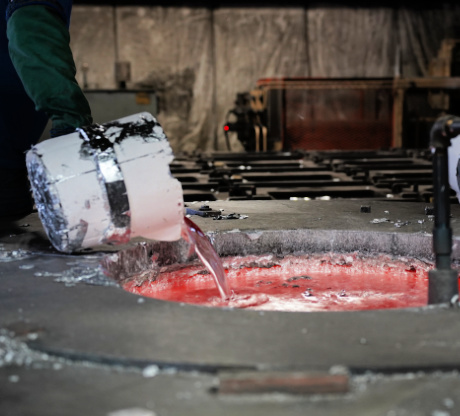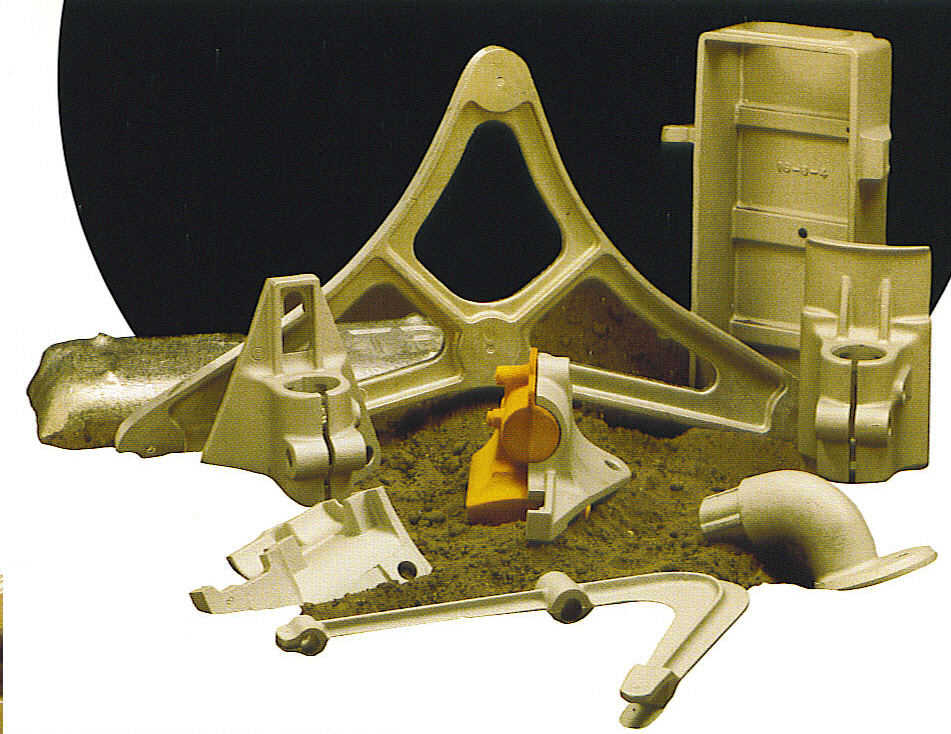The role of Wisconsin Aluminum Foundry in eco-friendly practices
Wiki Article
Comprehending the Role of Aluminum Foundry in Creating High-Quality Metal Products
Aluminum foundries are important in the manufacturing of high-quality steel products. They use various casting techniques, such as sand and die spreading, to achieve accuracy and resilience. With extensive quality assurance measures in place, these centers assure that their products meet sector requirements. As markets progress, the function of Aluminum shops continues to adjust. This raises inquiries regarding future advancements and sustainability techniques that might redefine their impact.The Aluminum Casting Refine: Strategies and Innovations
The Aluminum casting process has actually evolved considerably, integrating numerous techniques and innovations that enhance effectiveness and item quality. Typically, approaches such as sand casting and die casting were predominant; nevertheless, developments have actually introduced procedures like investment casting and low-pressure die spreading. These developments allow suppliers to accomplish intricate layouts and tighter resistances, minimizing material waste and enhancing general performance.The combination of computer-aided design (CAD) and simulation software application permits for more accurate modeling and screening, making certain that possible issues are determined early in the production cycle. Aluminum Foundry. Additionally, improvements in alloy formulations cause improved mechanical residential or commercial properties and corrosion resistance
These advancements not only streamline production but likewise advertise sustainability by minimizing energy usage and emissions. As the market remains to accept new modern technologies, the Aluminum casting process stays an important component in creating high-quality steel products that fulfill diverse market demands.
Applications of Aluminum in Various Industries
Aluminum's flexibility and positive residential properties make it a useful product across different industries. In the auto market, Aluminum is widely made use of for its light-weight features, adding to enhanced fuel performance and efficiency. The aerospace sector additionally benefits, as light weight aluminum's high strength-to-weight proportion boosts aircraft layout while maintaining security standards.In building, Aluminum is preferred for its longevity and resistance to rust, making it suitable for window frameworks, roof, and structural parts. The packaging sector leverages light weight aluminum's safe nature and recyclability, especially in food and drink containers, making certain safety and sustainability.
Additionally, the electric sector utilizes Aluminum for its superb conductivity in electrical wiring and transmission lines. The durable goods industry uses Aluminum in products varying from kitchen tools to electronics, highlighting its adaptability. Aluminum plays an essential duty in enhancing performance, performance, and sustainability throughout varied applications.
Benefits of Using Aluminum Over Other Metals
While lots of metals are employed in different applications, Aluminum stands apart because of its one-of-a-kind mix of buildings that supply numerous advantages over various other materials. Its light-weight nature significantly reduces transport expenses and energy intake, making it excellent for markets such as auto and aerospace. Aluminum's outstanding rust resistance boosts longevity, extending the life of items and reducing upkeep requirements. Additionally, it displays high thermal and electrical conductivity, making it suitable for electrical and thermal administration applications.The metal's pliability enables for complex forms and elaborate layouts, offering versatility in making processes. Aluminum is 100% recyclable without loss of top quality, promoting sustainability and lowering ecological effect. These qualities, integrated with its reasonably inexpensive contrasted to other metals, placement Aluminum as a preferred selection across different sectors. In general, the advantages of Aluminum add to its enhancing appeal in the manufacturing of premium steel products

Quality Assurance Steps in Aluminum Foundries
Quality assurance actions play a vital duty in the Aluminum Foundry procedure, making sure that the final items satisfy strenuous sector criteria and consumer assumptions. These measures normally start with product inspection, where raw Aluminum is assessed for purity and composition. When the spreading procedure starts, temperature level control is important; maintaining suitable molten metal temperatures protects against issues such as porosity and contraction.Additionally, non-destructive screening (NDT) strategies, including ultrasonic and radiographic examinations, are used to find inner flaws without harming the spreadings. Aesthetic examinations are additionally conducted at numerous phases to determine surface blemishes.
Adherence to well established quality monitoring systems, such as ISO criteria, is vital for preserving consistency and traceability throughout the manufacturing process. Normal audits and staff member training on high quality requirements add to a total culture of quality, ensuring that the items not only satisfy but go beyond customer assumptions in efficiency and click here resilience.
The Future of Aluminum Foundries: Trends and Sustainability
As the Aluminum Foundry sector develops, arising trends and a concentrate on sustainability are reshaping its landscape. Enhancing need for lightweight and sturdy materials in fields like automotive and aerospace drives technology in Aluminum casting strategies. Advanced modern technologies, such as expert system and automation, are enhancing manufacturing efficiency and precision while minimizing waste.Sustainability is ending up being a critical problem, motivating factories to execute green practices, including recycling Aluminum scrap and using eco-friendly energy resources. The change in the direction of circular economic situation concepts motivates factories to lessen ecological impact while satisfying customer assumptions for lasting items.
In addition, governing stress are pressing the sector in the direction of cleaner procedures, fostering collaboration between suppliers and environmental companies. As these fads converge, the future of Aluminum factories will likely be defined by a dedication to effectiveness, high quality, and sustainability, ensuring their importance in an open market.
Often Asked Concerns
What Are the Environmental Impacts of Aluminum Foundries?
Light weight aluminum foundries contribute to ecological effects via energy usage, greenhouse gas emissions, and possible air and water contamination. Furthermore, mining bauxite for Aluminum can result in habitat devastation and soil degradation, affecting neighborhood environments.

Exactly How Do Shops Guarantee Employee Safety And Security During Production?
Foundries implement strenuous security methods, consisting of safety tools, air flow systems, and regular training. They carry out risk assessments and preserve safety and security criteria to minimize dangers, ensuring a safer working setting for staff members throughout the production process.What Qualifications Should an Aluminum Foundry Have?
An aluminum Foundry must have qualifications such as ISO 9001 for quality management, ISO 14001 for ecological administration, and OSHA compliance for safety and security criteria. These certifications ensure adherence to sector guidelines and dedication to top quality and safety methods.Just How Does Aluminum Recycling Affect Foundry Workflow?
Aluminum reusing greatly improves Foundry procedures by supplying a cost-effective resources source, decreasing energy consumption, and reducing ecological influence - Metal Castings. It also encourages sustainable practices, allowing shops to preserve competitiveness in a quickly progressing marketWhat Prevail Problems in Aluminum Castings?
Usual issues in Aluminum castings consist of porosity, contraction, inclusions, and surface imperfections. These concerns can develop from incorrect mold layout, inadequate putting methods, or contamination during the melting and spreading procedures, affecting overall product top quality.
Report this wiki page